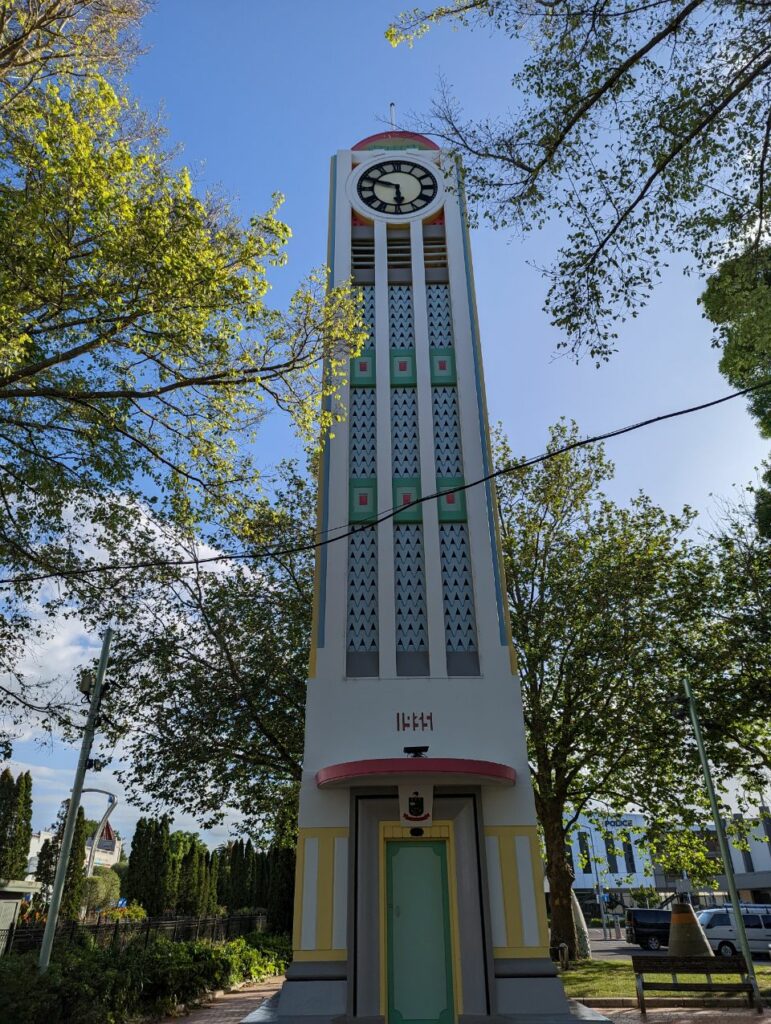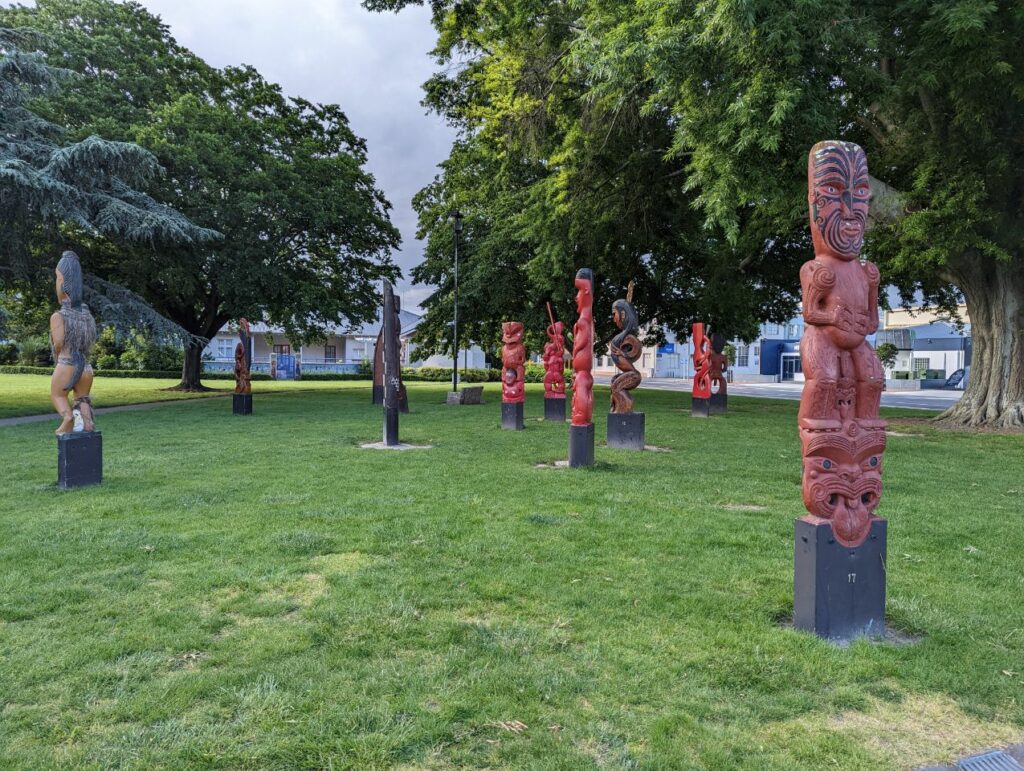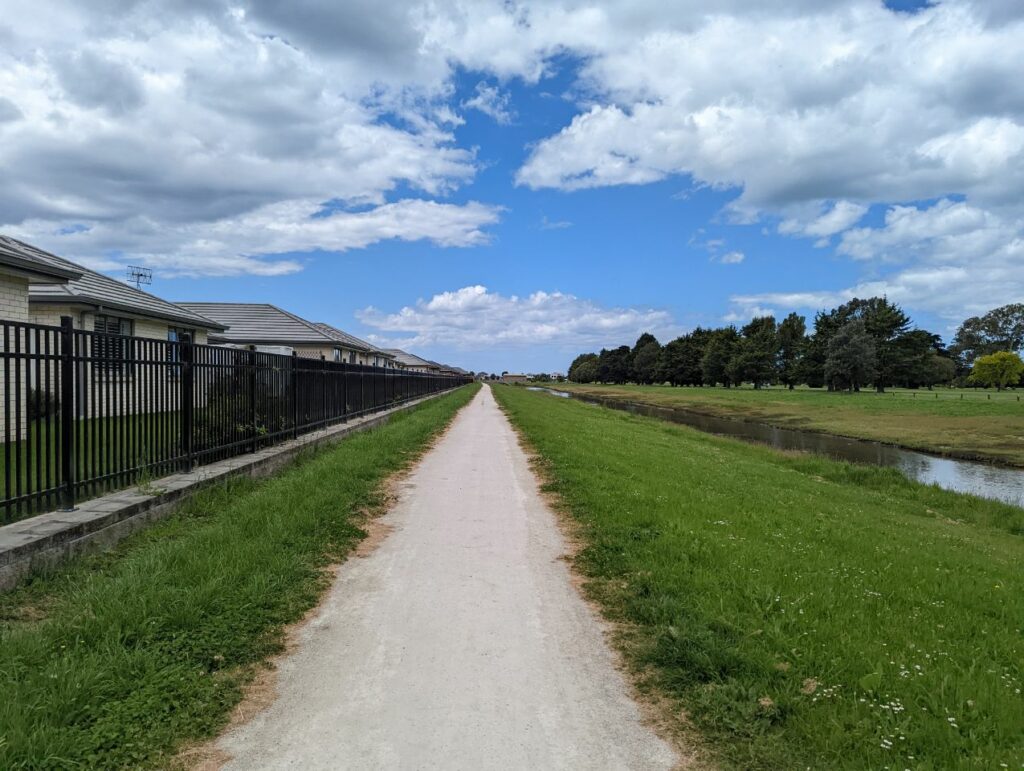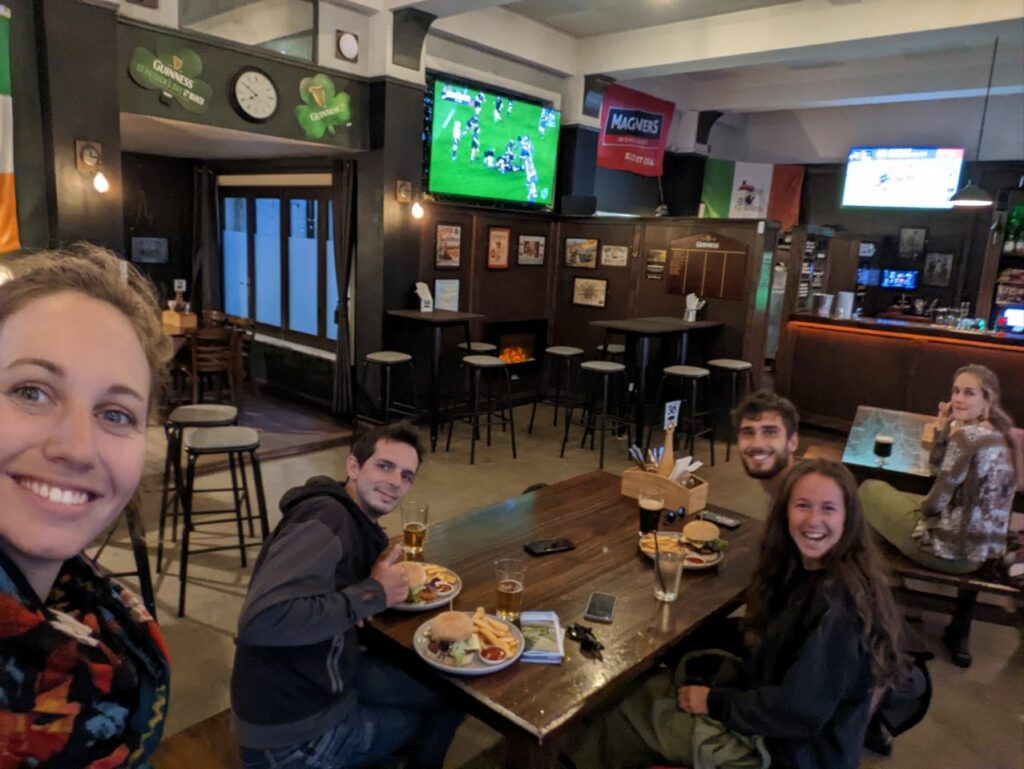Ce matin on a quitté nos hôtes super sympa et leurs abeilles
On a fait un dernier tour pour déplacer quelques ruches avant de partir
Puis direction Hastings, où on a retrouvé Soline et Thomas qu’on avait rencontré il y a quelques jours à Rotorua
Et on a fini au pub pour voir THE match ( Fr -NZ) match tout simplement incroyable
Ah et pour finir c’était la fête nationale donc plein de feux d’artifice lancés dans la ville de partout 🙂

HASTINGS
Novembre 5th 2022
Hastings (/ˈheɪstɪŋz/; Māori: Heretaunga) is an inland city of New Zealand and is one of the two major urban areas in Hawke’s Bay, on the east coast of the North Island. The population of Hastings (including Flaxmere) is 50,400 (as of June 2022),[3] with a further 15,100 people in Havelock North and 2,470 in Clive. Hastings is about 18 kilometres inland of the coastal city of Napier. These two neighbouring cities are often called « The Bay Cities » or « The Twin Cities ».
The city is the administrative centre of the Hastings District. Since the merger of the surrounding and satellite settlements, Hastings has grown to become one of the largest urban areas in Hawke’s Bay.
Hastings District is a food production region. The fertile Heretaunga Plains surrounding the city produce stone fruits, pome fruit, kiwifruit and vegetables, and the area is one of New Zealand’s major red wine producers. Associated business include food processing, agricultural services, rural finance and freight. Hastings is the major service centre for the surrounding inland pastoral communities and tourism.
History
Māori history
Near the fourteenth century CE, Māori arrived in Heretaunga or Hawke’s Bay, settling in the river valleys and along the coast where food was plentiful. It is believed that Māori arrived at Heretaunga by canoe, travelling down the coast from the north, landing at Wairoa, Portland Island, the Ahuriri Lagoon at Westshore, and at Waimārama. Their culture flourished, causing gradual deforestation of the land.[4] The forest was replaced by bracken, making this one of the few regions of New Zealand where sheep could be brought in by later European settlers without felling the bush first. In the sixteenth century, Taraia, great-grandson of the great and prolific chief Kahungunu, established the large tribe of Ngāti Kahungunu, which eventually colonised the eastern side of the North Island from Poverty Bay to Wairarapa. They were one of the first Māori tribes to come in contact with European settlers.




